The Awful Truth

Brief Synopsis
Cast & Crew
Leo Mccarey
Irene Dunne
Cary Grant
Ralph Bellamy
Alexander D'arcy
Cecil Cunningham
Film Details
Technical Specs

Synopsis
Sophisticated New Yorkers Jerry and Lucy Warriner both have cause to suspect the other of having an affair, so they decide to divorce. Although Lucy wins custody of their dog, "Mr. Smith," the lack of a suitable male escort keeps her at home every night. Happily, Lucy's Aunt Patsy meets their neighbor, Oklahoma oil man Daniel Leeson, who is presentable and eligible, and introduces him to Lucy. While they are all getting acquainted, Jerry arrives for his custody visit with Mr. Smith, and his rowdy antics with the dog drive the others out of the apartment. By the end of the evening, Lucy and Daniel are infatuated. During the next few months, Jerry does everything he can to break up their engagement, but when Daniel's mother, who is adamantly against the engagement, spreads gossip about Lucy, Jerry leaps to her defense. Finally, because of a comedy of errors, Lucy and Daniel do separate, but in the meantime, Jerry has gotten involved with madcap heiress Barbara Vance. On the night before the final divorce decree, Lucy, posing as Jerry's sister, visits the Vance home, pretends to get drunk, parodies the ridiculous cabarat act of one of Jerry's former girlfriends, and behaves so obnoxiously that Jerry is forced to drive her home. Determined not to lose Jerry, Lucy tricks him up to Patsy's cabin, where they are reconciled just before the clock strikes midnight.

Director

Leo Mccarey
Cast
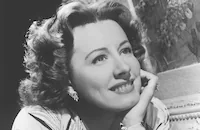
Irene Dunne

Cary Grant

Ralph Bellamy

Alexander D'arcy

Cecil Cunningham

Molly Lamont
Esther Dale
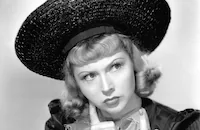
Joyce Compton
Robert Allen
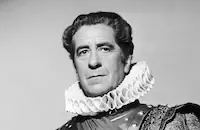
Robert Warwick
Mary Forbes
Claud Allister
Zita Moulton
Scott Colton
Wyn Cahoon
Paul Stanton
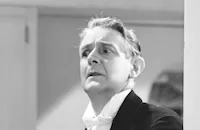
Leonard Carey

Byron Foulger
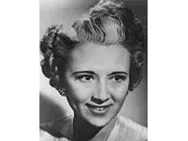
Bess Flowers
Edgar Dearing
Mitchell Harris
Miki Morita
George Pearce
Frank Wilson
Vernon Dent
Bobby Watson
Kathryn Curry
Edward Peil Sr.
John Tyrell
Edmund Mortimer
Lee Willard
Arthur Stuart Hall
Bruce Sidney
Frances Raymond
Ruth Cherrington
Dora Clement
Crew
Lionel Banks
Ed Bernds
Al Clark
Viña Delmar
Milton Drake
Stephen Goosson
Babs Johnstone
Kalloch
Leo Mccarey
William Mull
Ben Oakland
Ben Oakland
Everett Riskin
Morris Stoloff
Dwight Taylor
Joseph Walker

Photo Collections
Videos
Movie Clip




Hosted Intro





Film Details
Technical Specs

Award Wins
Best Director
Award Nominations
Best Actress
Best Editing
Best Picture
Best Supporting Actor
Best Writing, Screenplay
Articles
Pop Culture (1/7/2006) - THE AWFUL TRUTH
The Arthur Richman play on which this was based had been filmed twice before, in 1925 with Agnes Ayres and Warner Baxter and in 1929 with Ina Claire and Henry Daniell. It was remade without much success as Let's Do It Again (1953), with Jane Wyman and Ray Milland.
The wire-haired terrier playing the Warriner's dog, Mr. Smith, is Asta, who appeared under his own name as Nick and Nora Charles' pet in several of the "Thin Man" movies. He also played George in Bringing Up Baby (1938) and Mr. Atlas (credited as Skippy) in Topper Takes a Trip (1939).
While parodying her husband's nightclub singer girlfriend doing the song "My Dreams Are Gone with the Wind," Irene Dunne does a few seconds of the shuffle dance step she performed in Showboat (1936).
In his comedy Part Time Wife (1930), McCarey had a scene in which a lawyer is telling his client how wonderful marriage is while the lawyer's wife storms in and tells him in a very surly way, "Your dinner's getting cold." McCarey used the same basic scene in The Awful Truth.
The last scene of Grant and Dunne's follow-up film, My Favorite Wife (1940), produced and with a story by Leo McCarey, mirrors the final scene of this movie. Dunne lies comfortably in bed teasing Grant with the thought of sleeping with her but holding him at bay by telling him they have to wait 60 days until his other marriage is annulled.
In an earlier romantic comedy, Mitchell Leisen's Hands Across the Table (1935), Fred MacMurray also has to resort to a fake suntan to pull off a lie to his sweetheart. The earlier movie was written in part by Vina Delmar.
Ads for Grant's later comedy His Girl Friday (1940) made reference to this picture: "The Awful Truth didn't tell half of what you gals can do to a guy!"
Political documentary filmmaker Michael Moore named his 1999-2000 TV series The Awful Truth.
by Rob Nixon

Pop Culture (1/7/2006) - THE AWFUL TRUTH
Trivia (1/7/2006) - THE AWFUL TRUTH
Cary Grant did not receive an Oscar® nomination for his work (some say it was because he was already developing a notorious reputation for being a difficult and financially demanding actor), but the film gave a tremendous boost to his career. He quickly signed a contract with RKO to make three films over the following two years at an initial fee of $50,000 against a percentage of the profits of each picture.
Leo McCarey and Cary Grant made two more films together: Once Upon a Honeymoon (1942) and An Affair to Remember (1957), a remake of McCarey's classic romance Love Affair (1939), which starred Irene Dunne. McCarey also produced and wrote the story for the first Grant-Dunne re-teaming, My Favorite Wife (1940). He was set to direct it, too, but a bad auto accident put him out of commission and Garson Kanin stepped in. In spite of their frequent collaboration, McCarey maintained some bitterness all his life toward Grant. Some have said it was because Grant never acknowledged McCarey's influence on his career and on the creation of the "Cary Grant" image.
In addition to My Favorite Wife, Grant and Dunne appeared together in the sentimental drama Penny Serenade (1941).
The success of The Awful Truth proved to be a boon for Leo McCarey. From 1937 on, he was able to produce all but one of his own movies for the rest of his career.
The son of one of California's best-known boxing promoters, McCarey took a turn at law on his father's wishes but found himself most at home in motion pictures. He started out as third assistant director to Tod Browning, who later directed Dracula (1931), Freaks (1932), and a number of Lon Chaney pictures. McCarey then moved on to the Hal Roach studios. When sound came in, it was difficult for many silent directors to get work since producers often thought they were not capable of handling dialogue. But McCarey was given the chance to direct his first sound feature, The Sophomore (1929), by fellow Irish-Catholic Joseph Kennedy, father of the future president.
Ingrid Bergman, who worked with McCarey on The Bells of St. Mary's (1945), found him "a terribly funny man...the jokes that went on, the gaiety!...He was a very easy-going man."
McCarey won three more Oscars® in 1945 for writing, producing, and directing the Best Picture of that year, Going My Way (1944).
by Rob Nixon
Famous Quotes from THE AWFUL TRUTH
LUCY (Irene Dunne): You've come back and caught me in the truth, and there's nothing less logical than the truth.
JERRY (Cary Grant): You can't have a happy married life if you're always suspicious. There can't be any doubts in marriage...marriage is based on faith, and when you've lost that, you've lost everything.
LUCY: I've seen your picture in the paper and wondered what you looked like.
DAN (Ralph Bellamy): I'm in oil, you know.
PATSY (Cecil Cunningham): Marinated, so to speak.
PATSY: Look at that rain.
LUCY: Why, is it doing anything besides falling?
JERRY: And if you get bored in Oklahoma City, you can always go over to Tulsa for the weekend!
JERRY: In the spring, a young man's fancy lightly turns to what he's been thinking about all winter.
ARMAND (Alexander D'Arcy): I am a great teacher, not a great lover.
LUCY: That's right, Armand. No one could ever accuse you of being a great lover.
JERRY: What did you tell him?
LUCY: I told him the truth, and strangely enough, he believed me.
LUCY: You're all confused, aren't you?
JERRY: Aren't you?
LUCY: No.
JERRY: Well you should be, because you're wrong about things being different because they're not the same. Things are different except in a different way. You're still the same, only I've been a fool... but I'm not now.
LUCY: Oh.
JERRY: So long as I'm different don't you think that... well maybe things could be the same again... only a little different, huh?
Compiled by Rob Nixon
Trivia (1/7/2006) - THE AWFUL TRUTH
The Big Idea (1/7/2006) - THE AWFUL TRUTH
Leo McCarey had been working at Paramount for a number of years, turning out comedies for the Marx Brothers (Duck Soup, 1933), W.C. Fields (Six of a Kind, 1934), Mae West (Belle of the Nineties, 1934), and Harold Lloyd (The Milky Way, 1936), when he took an abrupt thematic turn for Make Way for Tomorrow (1937), a tender and heart-wrenching film about old age. The movie performed so poorly studio chief Adolph Zukor dropped McCarey's contract, forcing the director to began negotiations with Columbia. That studio was looking for a follow-up to Theodora Goes Wild (1936), a movie that revealed the until-then undiscovered comic talents of Irene Dunne and earned her a second Oscar® nomination.
One day, McCarey ran into Cary Grant on the corner of Vine and Melrose in Hollywood and discovered the actor, too, had just been dropped by Paramount. But neither knew the other was in talks with Columbia until the studio signed Grant and decided to pair him with Dunne under McCarey's direction. They handed McCarey a script based on a play about divorce that had been filmed twice before. He found it uninspiring, tore it up, and contacted Vina Delmar, who was credited with writing the script for Make Way for Tomorrow. They began work on a new script, sitting in McCarey's car on Hollywood Boulevard working out ideas.
Ralph Bellamy was cast as the Oklahoma oilman who attempts to woo Dunne after her separation from Grant, a role that was originally written as an Englishman for Roland Young (who McCarey had directed in Ruggles of Red Gap, 1935). According to Bellamy a number of other writers, including Dorothy Parker and Dwight Taylor, took turns at trying to turn the Englishman into a particular type of American dullard.
McCarey told Peter Bogdanovich years later that much of what ended up in the movie was based on his own life, particularly experiences with his wife, although he was quick to point out that the infidelity was imaginary and not autobiographical. One detail from his life that crept into the script: After leaving the law profession (but prior to entering the film industry), McCarey had failed miserably at a mining venture. In The Awful Truth (1937), Cary Grant tries to unload a failed mine on his wife's new suitor.
Rather than starting from solid plot construction, McCarey preferred to build his scripts as a series of occurrences around the slightest of storylines. He called this his theory of the "ineluctability of incidents," the idea that "if something happens, some other thing inevitably flows from it. Like night follows day, events are linked together." His preference to work with a series of incidents that "succeed and provoke each other" opened up his process to valuable improvisation on the set.
by Rob Nixon
The Big Idea (1/7/2006) - THE AWFUL TRUTH
Behind the Camera (1/7/2006) - THE AWFUL TRUTH
Ralph Bellamy got a good taste of Leo McCarey's working style shortly after being informed he was to show up on the set the following Monday for filming. Bellamy had no script, no dialogue, or even a hint about his upcoming scene so he went to see the director, but received no help at all from the perpetually upbeat McCarey. "He just joshed and said not to worry, we'd have lots of fun but there wasn't any script," Bellamy wrote years later. The actor showed up on set for the first day of production to find Dunne at a piano. (McCarey almost always kept a piano on his sets, and he would often sit playing while he thought up a new scene or piece of business he wanted his actors to try.) Dunne was pecking away at the melody to "Home on the Range," and McCarey asked Bellamy if he could sing. "Can't get from one note to the other," the actor replied. "Great!" McCarey said and ordered the cameras to roll while Dunne played and Bellamy sang for all he was worth. When they finished the song, they heard no "Cut." Looking over, they found McCarey by the camera, doubled over with laughter. Finally he said, "Print it!" The scene ended up in the finished picture. That was the way McCarey worked, and Bellamy had to get used to it quickly.
One cast member could not get used to the improvisational process, however. Cary Grant was miserable from the outset and tried to convince the studio he should take the "other man" role as it had been written for Roland Young and let Bellamy play the lead. Grant was not an easy person to work with under the best circumstances, and McCarey's process unnerved him so badly, he went to Columbia head Harry Cohn and begged to be let out of the picture. (According to Bellamy, Dunne also requested to be released from the picture, although McCarey and Dunne later denied that.) Grant even offered to pay the studio $5,000 to cover the expenses incurred so far and let him go. When McCarey heard that, he told Cohn, "Well, if that isn't enough, I'll put in five and make it ten." Cohn refused to replace Grant, and McCarey was so mad, he wouldn't speak to the actor. "He had no sound judgment," McCarey said later, and Irene Dunne bore his assessment out. "Cary used to be very apprehensive about nearly everything in those days," she said. "So apprehensive, in fact, he would almost get physically sick. If the script, the director, an actor or a particular scene displeased him, he would be greatly upset."
What Grant didn't realize was that McCarey was transforming his career by creating a nervous tension in the actor that inspired his performance. And in the process, the director was building scenes from fresh moments between his actors. Giving the barest outlines of a scene, he would have his actors try something on their feet. For instance, in one rehearsal, he told Dunne to simply open the door of her apartment and say, "Well, if it isn't my ex." He told Grant to answer with whatever came into his head. Grant replied, "The judge says this is my day to see the dog." McCarey then built the scene around that moment and shot it while the actors were still fresh. The line stayed in the picture.
Dunne later recalled the scene where she pretends to be Grant's ill-bred nightclub performer sister, which was written over a weekend and handed to her on the morning she was scheduled to film it. She was supposed to do a burlesque bump in the middle of her musical number in that scene, a move she was never able to do. McCarey told her to just say, "Never could do that" when she got to that moment. She did, it stayed in the film, and Dunne found it "a choice comic bit."
Dunne also said McCarey was unsure how to end the picture until a member of the crew came up with the idea of having the male figure on the clock follow the female figure back through her door, a perfect substitute for showing Grant climbing into bed with Dunne.
McCarey's process enabled him to keep control over the tone of the film, throwing his cast off balance so they were not able to arrive on set with memorized lines, psychoanalyzed characterizations, and performances already frozen in their minds.
His other means of maintaining control over the picture was to shoot very little coverage of each scene and basically do all his editing in the camera. That way, there was very little leeway in how the footage could be edited other than the way he intended.
The movie was shot in six weeks, "a record for that kind of picture," according to Bellamy.
by Rob Nixon
Behind the Camera (1/7/2006) - THE AWFUL TRUTH
The Critics Corner (1/7/2006) - THE AWFUL TRUTH
"A foolishness that doesn't go wrong or strained." - Otis Ferguson, The New Republic, October 1937.
"Cary Grant's best, fast light comedy performance to date." - Variety, October 1937.
"Its comedy is almost purely physical - with only here and there a lone gag to interrupt the pure poetry of motion, yet its unapologetic return to the fundamentals of comedy seems, we repeat, original and daring...a comedy in which speech is subsidiary" - Bosley Crowther, New York Times, October 1937.
"There's nothing special about the story...but the two stars are terrific, making amusing lines sound downright sophisticated, improvising, doing physical comedy...Entire production is bursting with energy...And the final scene, in which Grant and Dunne have connecting bedrooms, is a gem." - Danny Peary, Guide For the Film Fanatic.
"A rollicking comedy that should delight anyone." - New York Sun, October 1937.
"In Cary Grant and Irene Dunne, McCarey found the right balance of warmth and comedy technique. And as always with McCarey, it is our ability to see the joke coming and then watch the small improvement on expectation that constitutes the real impact." - David Thomson, A Biographical Dictionary of Film (Alfred A. Knopf, Inc., 1975).
"A classic screwball comedy...Irene Dunne's way with a quip is to smile brightly and wring it dry, but she's at her best here...Leo McCarey's direction is first-rate." - Pauline Kael, 5001 Nights at the Movies.
"McCarey transforms it through his customary affection for his characters and taut pacing into delightfully effective entertainment. The erotically teasing ending, with a black cat obstinately barring the communicating bedroom door which the almost un-estranged couple are praying will open, has a delicacy of touch that Lubitsch rarely managed." - Geoff Andrew, Time Out Film Guide (Penguin Books, 2000).
" Delightfully effective entertainment" - Time.
"Among the ingredients the raising powder is the important thing and out of the oven comes a frothy bit of stuff that leaves no taste in the mouth and is easy on the stomach." - Marion Fraser, World Film News.
"Classic crazy comedy of the thirties, marked by a mixture of sophistication and farce and an irreverent approach to plot." - Halliwell's Film & Video Guide.
Compiled by Rob Nixon
Awards & Honors
The Awful Truth (1937) was nominated for six Academy Awards: Best Picture, Actress (Dunne), Supporting Actor (Bellamy), Screenplay, Editing, and Director. When McCarey received the directing award (a big surprise, he said), he was rumored to have remarked, "You gave it to me for the wrong picture." He never got over the failure of Make Way for Tomorrow, released the same year and the one film of which he was always proudest.
In 1996, the film was chosen by the National Film Preservation Board to be one of the motion pictures preserved on the National Film Registry at the Library of Congress.
by Rob Nixon
The Critics Corner (1/7/2006) - THE AWFUL TRUTH
The Awful Truth
Lucy (Irene Dunne) and Jerry Warriner (Cary Grant) decide to divorce, but their split will not be effective for 90 days. In the meantime, Lucy makes time with a rich-but-blundering Oklahoma oil tycoon and mama's boy, Daniel Leeson (Ralph Bellamy) and Jerry with a highly-string, snobbish socialite Barbara Vance (Molly Lamont). But circumstances keep bringing Jerry and Lucy back together as the calendar pages to their divorce flip by.
Originally a 1922 stage hit penned by Arthur Richman, The Awful Truth was adapted twice to film in 1925 and 1929 and re-made in 1953 as Let's Do It Again. But it was director McCarey who made the definitive adaptation of Richman's story, winning a Best Director Academy Award¨ for his version which also received nominations for Best Picture, Best Actress (Dunne), Best Supporting Actor (Bellamy), Best Screenplay and Best Editing.
Known for its giddy brand of comedy and zany pacing, The Awful Truth includes priceless vignettes like a divorce court scene where Lucy and Jerry vie for custody of their beloved wirehaired fox terrier Mr. Smith (Asta from The Thin Man series).
McCarey's slapstick training was well-honed by the time he made The Awful Truth, perfected in his work with the Marx Brothers and in directing "Our Gang" comedy shorts and Laurel and Hardy films, as he rose from a gagman to vice-president at Hal Roach studios. Greatly influenced by his years at Roach Studios, McCarey encouraged a party-like atmosphere during his later filmmaking endeavors. In The Awful Truth McCarey adapted his comic training to the bedrooms and living rooms of Manhattan's sophisticated upper- crust with wildly successful results, allowing Grant and Dunne to improvise their dialogue in several scenes. McCarey's great belief in improvisation led some to claim that he made up 75% of each day's material on the set, as in a hilarious, supposedly unscripted duet where the tin-eared Belamy performs "Home on the Range" to Dunne's piano accompaniment. The Awful Truth was testament to McCarey's talents as a visual director, or as The New York Times critic Bosley Crowther noted, "Its comedy is almost purely physical...with only here and there a lone gag to interrupt the pure poetry of motion."
Not everyone was reassured by McCarey's working method, like Grant, who McCarey dubbed "the Happy Worrier." The actor was said to be so unsure about the success of The Awful Truth, that during filming he even offered to buy his way out of the production for $5,000. In an ironic twist, The Awful Truth turned out to be not only a Hollywood classic, but at its time a box office success that caused Grant's fan mail to jump from 200 to 1400 fan letters a week.
The Awful Truth remains one of the most significant comedies of the 1930s, one dealing with the at-the-time unusual subject of divorce in a clever, urbane manner, while still reaffirming the importance of Lucy and Jerry's marriage. The chemistry between Grant and Dunne was so good that McCarey reunited the pair for the 1940 comedy My Favorite Wife though McCarey was eventually replaced by Garson Kanin after being badly hurt in a car accident.
Producer/Director: Leo McCarey
Screenplay: Vina Delmar
Cinematography: Josph Walker
Costume Design: Robert Kalloch
Film Editing: Al Clark
Original Music: Morris W. Stoloff
Principal Cast: Irene Dunne (Lucy Warriner), Cary Grant (Jerry Warriner), Ralph Bellamy (Daniel Leeson), Robert (Tex) Allen (Frank Randell), Cecil Cunningham (Aunt Patsy), Mary Forbes (Mrs. Vance).
BW-91m.
by Felicia Feaster
The Awful Truth
Quotes
And if you get bored in Oklahoma City, you can always go over to Tulsa for the weekend!- Jerry Warriner
I've seen your picture in the paper and wondered what you looked like.- Lucy Warriner
You've come back and caught me in the truth, and there's nothing less logical than the truth.- Lucy Warriner
In the spring, a young man's fancy lightly turns to what he's been thinking about all winter.- Jerry Warriner
I am a great teacher, not a great lover.- Armand Duvalle
That's right, Armand. No one could ever accuse you of being a great lover.- Lucy Warriner
Trivia
The dog, "Mr. Smith," is the same dog who played Asta in the Thin Man series.
Much of the film was improvised by director Leo McCarey and the cast.
This film was selected to the National Film Registry, Library of Congress, in 1996
Notes
"Mr. Smith," the dog, is played by "Skippy," who also starred as Asta in M-G-M's The Thin Man series. Leo McCarey won an Academy Award for direction and the film also received Oscar nominations for Best Picture, Actress (Dunne), Supporting Actor (Bellamy), and Screenplay. Film Daily named the film one of 1937's best. Motion Picture Herald credits Marguerite Churchill with the role of "Barbara Vance," but Molly Lamont is listed onscreen. According to modern sources, much of the film was improvised by McCarey and the actors. Modern sources list Alan Bridge as a "Motor cop." Arthur Richman's play was also the basis for a silent film in 1925, directed by Paul Powell and starring Agnes Ayers and Warner Baxter. It was filmed again in 1929 as a talkie, directed by Marshall Neilan and starring Ina Claire, who also headed the Broadway cast (see AFI Catalog of Feature Films, 1929-30; F2.2010 and F2.2011). In 1953 it was remade by Columbia under the title Let's Do It Again, directed by Alexander Hall and starring Jane Wyman and Ray Milland.

Miscellaneous Notes
Released in United States 1937
Released in United States March 1987
Released in United States May 2001
Released in United States September 1999
Shown at Cannes International Film Festival (Retrospective) May 9-20, 2001.
Shown at Toronto International Film Festival (Talking With Pictures) September 9-18, 1999.
Released in United States 1937
Released in United States March 1987 (Shown at AFI/Los Angeles International Film Festival (UCLA Movie Marathon: A Tribute to Cary Grant) March 11-26, 1987.)
Released in United States May 2001 (Shown at Cannes International Film Festival (Retrospective) May 9-20, 2001.)
Released in United States September 1999 (Shown at Toronto International Film Festival (Talking With Pictures) September 9-18, 1999.)













